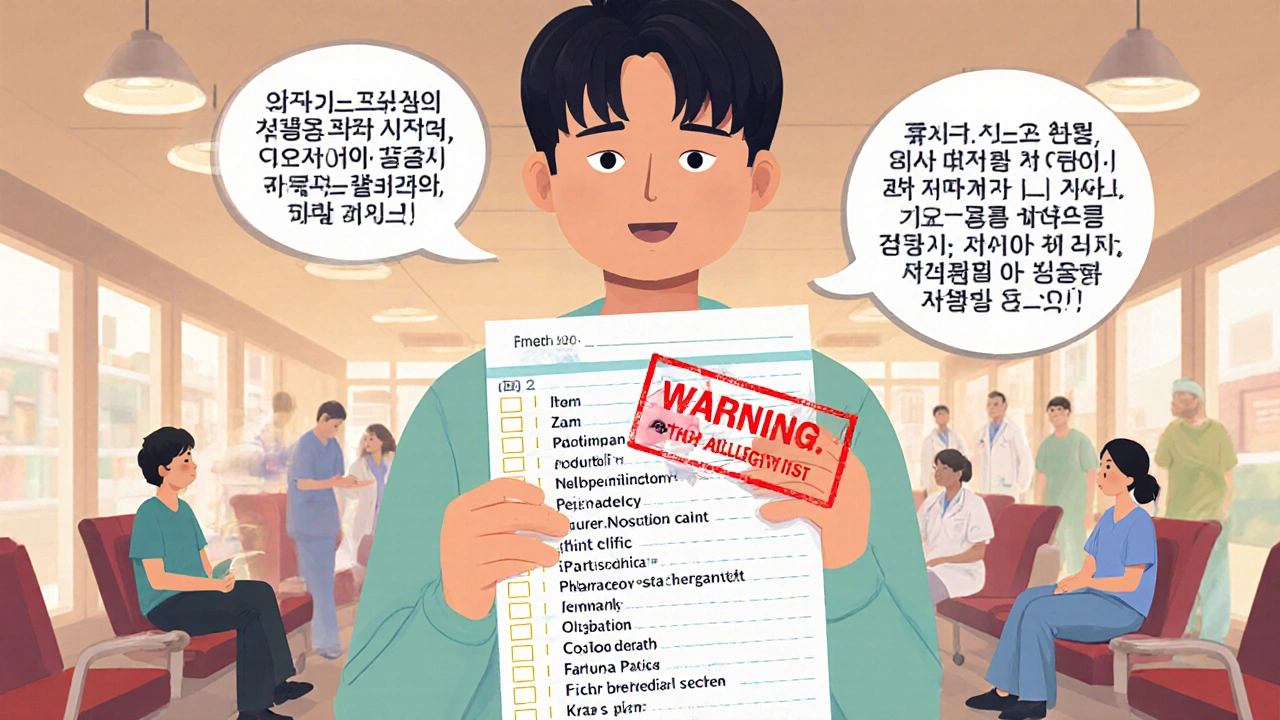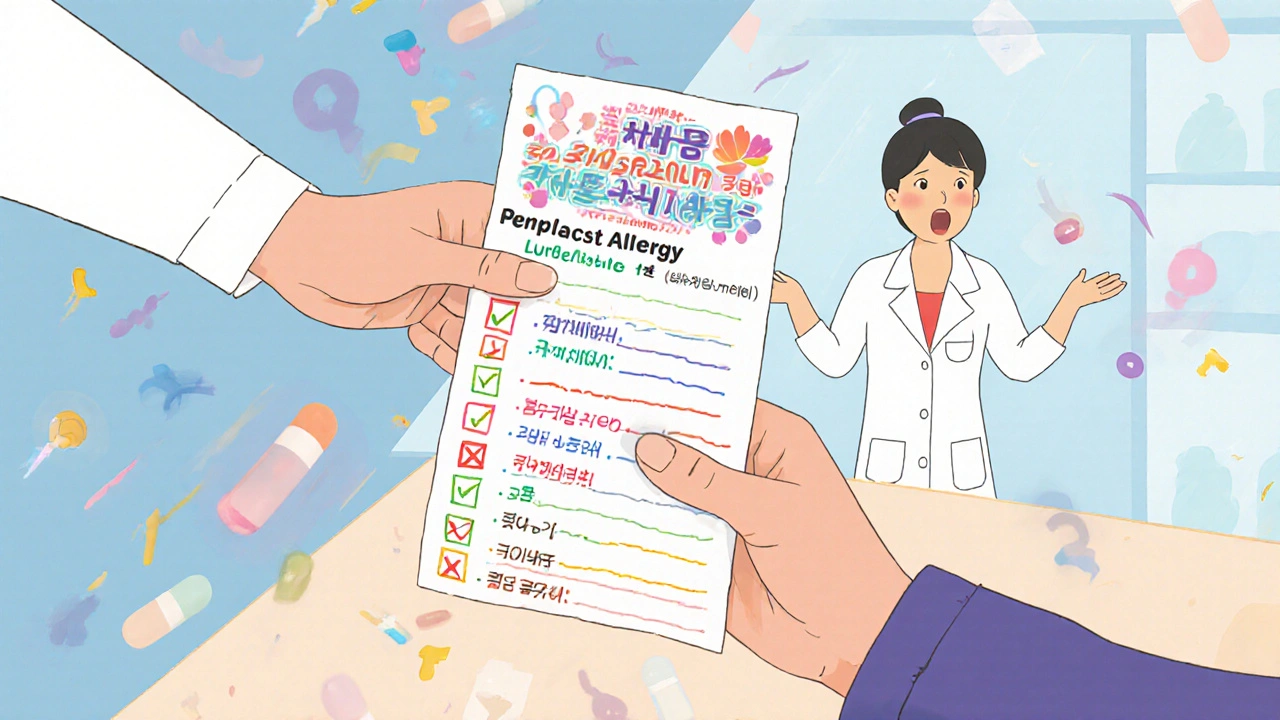How to Update Your Allergy List Across All Healthcare Providers

Every time you visit a new doctor, pharmacist, or emergency room, your allergy list could be wrong-and that’s not just a small risk. It could mean getting a drug that triggers a life-threatening reaction. The truth is, allergy list update isn’t something you do once and forget. It’s an ongoing process, and if you don’t take charge of it, no one else will. Even if you think your records are up to date, studies show nearly 1 in 8 patients have outdated or incorrect allergy information in their electronic health records. That’s not a typo. That’s 12.9% of people walking into clinics with labels that don’t match what their body actually reacts to.
Why Your Allergy List Is Probably Out of Date
You might think, “I told my doctor about my penicillin rash in 2019. They wrote it down.” But here’s what happens next: your primary care doctor sends you to an allergist. The allergist does a skin test and confirms you’re not allergic anymore. They update their notes. But that update doesn’t automatically sync with your local pharmacy, the hospital you went to last year, or the urgent care center you visited last winter. Each system runs on different software. Most don’t talk to each other properly. And even when they do, they often just copy-paste old entries without checking if they’re still valid. A 2022 study from Parkland Health found that nearly 13% of allergies listed in EHRs needed to be removed or corrected after review. Why? Because people outgrow allergies. Reactions get mislabeled. A mild rash gets recorded as “anaphylaxis.” A reaction to a dye in a pill gets confused with a reaction to the drug itself. And without a structured way to verify, those errors stick around-for years.What Your Allergy List Should Actually Include
It’s not enough to say “I’m allergic to penicillin.” That’s too vague. Your allergy list needs details:- What exactly reacted? Was it amoxicillin? Penicillin V? Or a specific brand?
- What happened? Rash? Swelling? Trouble breathing? Nausea?
- When did it happen? Was it 20 years ago? Or last week?
- How severe was it? Mild, moderate, or life-threatening?
- Was it verified? Did a doctor test you? Or was it just based on what you remembered?
How to Fix It: A Step-by-Step Plan
You don’t need to wait for your doctor to fix this. You can do it yourself. Here’s how:- Collect every allergy you’ve ever been told you have. Look through old medical records, pharmacy labels, and even your own notes. Write down each drug, reaction, date, and severity.
- Call your main doctor’s office and request a copy of your current allergy list. Ask for it in writing-email or patient portal message. Don’t assume it’s accurate.
- Compare it to your list. Are there drugs listed that you’ve taken since without issue? Are there reactions that were never confirmed?
- Ask for a drug challenge test if you’re unsure. Especially for penicillin. Most people who think they’re allergic aren’t. A simple skin test or oral challenge can clear up false labels in under an hour. If your doctor says no, ask for a referral to an allergist.
- Update your records at every provider. When you visit a new clinic, hospital, or pharmacy, say: “I’ve reviewed my allergy list. Here’s what’s current.” Hand them a printed copy or show them your patient portal screen.
- Use your patient portal to update your list directly. Most systems let you edit your own allergy list. Don’t wait for staff to do it. Do it yourself. Then confirm the change stuck.

What to Do When Providers Don’t Listen
Sometimes, you’ll run into resistance. A nurse might say, “We don’t change allergy lists without a doctor’s order.” Or a pharmacist might say, “We have to keep the old label for safety.” Here’s how to respond:- “I’ve had a documented negative challenge test. Here’s the report.”
- “I’ve taken this drug five times since 2020 with no reaction. Can we remove this flag?”
- “I’m requesting an update to my official record under the MyHealthEData initiative. It’s my right.”
What About Non-Drug Allergies?
Most EHRs still suck at handling food, latex, or environmental allergies. They’re often buried under “Other” or left out entirely. But these matter too. A latex allergy can cause a reaction during surgery. A milk allergy might mean you can’t take a medication with lactose filler. Make sure you list:- Latex (especially if you’ve had reactions to gloves or catheters)
- Food allergies (milk, eggs, shellfish, nuts) with specific triggers
- Contrast dye reactions (iodine-based, used in CT scans)
- Environmental triggers (if they’ve caused anaphylaxis, like insect stings)
How to Keep It Updated Long-Term
This isn’t a one-time fix. Treat your allergy list like your phone number or emergency contact. Update it every time:- You take a new medication without a reaction
- You have a new reaction (even if you think it’s minor)
- You get tested by an allergist
- You switch doctors or health plans
- You go to a new hospital or urgent care
What Happens If You Don’t Update It?
You might get prescribed an antibiotic you’re not even allergic to. That sounds harmless-until you realize you’re getting a more expensive, less effective drug because your record says you’re allergic to penicillin. That’s not just inconvenient. It’s dangerous. Inaccurate allergy labels lead to:- Higher risk of antibiotic-resistant infections
- Longer hospital stays
- More side effects from second-line drugs
- Increased chance of anaphylaxis from a drug you were never truly allergic to
Final Tip: Bring a Printed Copy
No matter how good the tech gets, paper still works. Always carry a printed, updated copy of your allergy list in your wallet or phone. Use a simple format:- Penicillin: No reaction since 2020. Verified negative by skin test, 2021.
- Latex: Rash, swelling. Avoid gloves, catheters.
- Iodinated contrast: Severe reaction, 2021. Requires pre-medication.
- Amoxicillin: No known reaction. Previously mislabeled as penicillin allergy.
Can I remove an allergy from my record if I’ve taken the drug since without a reaction?
Yes. If you’ve taken a drug multiple times since the original reaction without issue, you can request removal. Bring documentation of those exposures (prescriptions, pharmacy logs, or your own notes). Ask for a formal allergy challenge test to confirm safety. Many hospitals now offer these tests for penicillin and other common drugs. Once verified, your provider must update your record under federal patient rights rules.
Why do some doctors still list allergies I outgrew years ago?
Because most EHR systems don’t automatically remove outdated allergies. They copy data from one system to another without reviewing it. Many providers also fear liability-if they remove an allergy and you have a reaction later, they could be blamed. That’s why they keep the old label, even if it’s wrong. You have to be the one to push for correction.
Do I need to update my allergy list at every pharmacy?
Yes. Pharmacies often pull data from different sources than your doctor’s office. Your local pharmacy might not know your allergy was removed by your allergist. Always confirm your list when picking up a new prescription. If the pharmacist flags a drug you know you’ve taken safely, ask them to check your updated record or call your doctor’s office.
What if I don’t have a patient portal?
Request one. Under the 2025 MyHealthEData initiative, all U.S. healthcare providers must offer secure patient portals. If yours doesn’t, ask for a written copy of your allergy list and keep it in a safe place. You can also ask your provider to send a copy to any new doctor you see. Keep a digital backup on your phone or cloud storage.
Are food allergies included in official EHR allergy lists?
They should be, but many systems still don’t handle them well. Only about 33% of EHRs accurately capture food or environmental allergies with full detail. Always manually add them. Specify the exact trigger (e.g., “peanuts,” not “nuts”) and the reaction type (e.g., “anaphylaxis,” “hives,” “GI distress”). If you’ve had a severe reaction, consider wearing a medical alert bracelet.
Next Steps: What to Do Today
Don’t wait. Here’s your action plan for the next 24 hours:- Open your patient portal or call your primary care office.
- Ask for your current allergy list in writing.
- Compare it to your own memory and records.
- Identify one item to remove or clarify.
- Send a message requesting the update.
- Print a new copy and keep it in your wallet.
